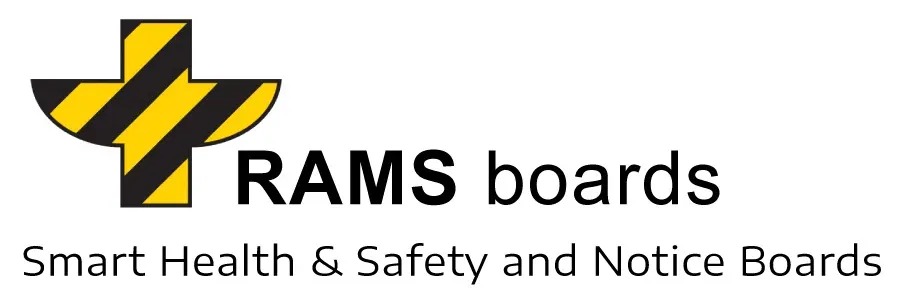RAMS boards significantly bolster SHEQ (Safety, Health, Environment, Quality) policies on construction sites by serving as effective tools for distributing, displaying, and reinforcing these important guidelines. Their role in supporting SHEQ policies can be detailed as follows:
- Central Distribution Point for SHEQ Policies: RAMS boards act as central points for disseminating SHEQ policies to the workforce. By positioning these boards in strategic locations, companies ensure that every worker has easy access to vital safety, health, environmental, and quality standards and protocols.
- High Visibility and Attention-Grabbing Design: The design of RAMS boards is such that they are highly visible and difficult to ignore. Their prominent positioning and eye-catching appearance make them ideal for capturing the attention of workers, ensuring that SHEQ policies are not just displayed but actively noticed and read.
- Customizable Signage for Specific SHEQ Focus: The top signs of RAMS boards can be customized to reflect specific SHEQ tasks or focuses. This flexibility allows companies to highlight particular aspects of their SHEQ policies, ensuring that the most relevant and current information is always front and center.
- Use of Color Coding for Different Information: RAMS boards come in a variety of colors, which can be utilized to implement a color-coding system within an organization or project. This can help in differentiating between various types of information (such as safety warnings, environmental guidelines, quality standards, etc.), making it easier for workers to locate and understand the information relevant to them.
- Engaging and Attractive Presentation of Information: The attractive and professional appearance of RAMS boards enhances their effectiveness as a communication tool. They are designed to be engaging, encouraging workers to stop and read the information presented. This engagement is crucial in ensuring that SHEQ policies are not just available but are actively being communicated and understood.
- Support for Multilingual Communication: Considering the diverse workforce on many construction sites, RAMS boards can support multilingual communication, ensuring that SHEQ policies are accessible to all workers regardless of their primary language. This inclusivity is key to effective implementation and adherence to these policies.
- Durability and Accessibility in Various Conditions: Constructed to be durable and weather-resistant, RAMS boards ensure that SHEQ policies remain accessible in different environmental conditions. This is particularly important on construction sites, where outdoor elements can otherwise hinder the availability of crucial information.
- Role in Continuous SHEQ Education: Beyond just displaying policies, RAMS boards can be used for ongoing SHEQ education. They can host training materials, updates on best practices, and information on recent changes in regulations, contributing to a culture of continuous learning and improvement in SHEQ matters.
In summary, RAMS boards support SHEQ policies by acting as centralized, highly visible, and engaging platforms for distributing these policies. Their customizable nature, use of color coding, support for multilingual communication, durable construction, and role in continuous SHEQ education make them an invaluable asset in promoting and maintaining high standards of safety, health, environment, and quality on construction sites.
